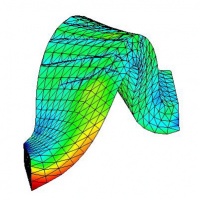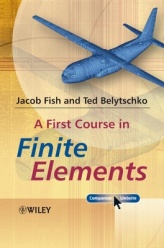(→me309 - finite element analysis in mechanical design) |
(→syllabus) |
||
| Line 42: | Line 42: | ||
| thu || apr || 02 || motivation / direct approach || chapter 2 || [http://biomechanics.stanford.edu/me309/me309_h01.pdf h01] || | | thu || apr || 02 || motivation / direct approach || chapter 2 || [http://biomechanics.stanford.edu/me309/me309_h01.pdf h01] || | ||
|- | |- | ||
| − | | tue || apr || 07 || ansys - introduction (in terman 104) || [http://biomechanics.stanford.edu/me309/me309_c03a.pdf t01] [http://biomechanics.stanford.edu/me309/me309_c03b.pdf t02] [http://biomechanics.stanford.edu/me309/me309_c03c.pdf t03] || || | + | | tue || apr || 07 || ansys - [http://biomechanics.stanford.edu/me309_09/intro.mov introduction] (in terman 104) || [http://biomechanics.stanford.edu/me309/me309_c03a.pdf t01] [http://biomechanics.stanford.edu/me309/me309_c03b.pdf t02] [http://biomechanics.stanford.edu/me309/me309_c03c.pdf t03] || || |
|- | |- | ||
| thu || apr || 09 || 1d strong and weak forms || chapter 3.1,3.2,3.4 || || | | thu || apr || 09 || 1d strong and weak forms || chapter 3.1,3.2,3.4 || || | ||
Revision as of 12:15, 1 April 2009
Contents |
me309 - finite element analysis in mechanical design
|
ellen kuhl spring 2009 |
goals
the key goal of this class is the fundamental understanding of the finite element method and its application to classical and state-of-the-art design problems. in class, we discuss the basic equations for one-, two-, and three-dimensional scalar- and vector-valued problems, i.e., heat transfer, convection-diffusion, and elasticity. in the hands-on part of the course, we introduce commercial finite element programs and demonstrate how to use ansys in analysing design problems. individual final projects focus on the interplay of analysis and testing in product design and development. to take this course, basic knowledge and general interest in mathematics, strength of materials, structural and solid mechanics, and heat transfer is highly recommended.
grading
- 50 % homework - 4 homework assignments, 12.5% each
- 30 % midterm - closed book, closed notes, one single letter format page of notes
- 20 % project - final homework project
syllabus
chapters refer to related reading from the fish & belytschko textbook "a first course in finite elements".
| day | date | topic | material | hw | due | |
|---|---|---|---|---|---|---|
| tue | mar | 31 | introduction | chapter 1 slides | ||
| thu | apr | 02 | motivation / direct approach | chapter 2 | h01 | |
| tue | apr | 07 | ansys - introduction (in terman 104) | t01 t02 t03 | ||
| thu | apr | 09 | 1d strong and weak forms | chapter 3.1,3.2,3.4 | ||
| tue | apr | 14 | 1d model problems | chapter 3.5,3.6,3.8 | ||
| thu | apr | 16 | 1d discretization | chapter 4 | h02 | h01 |
| tue | apr | 21 | 1d finite elements | chapter 5 | h05 | |
| thu | apr | 23 | multi d strong and weak forms | chapter 6 | ||
| tue | apr | 28 | multi d discretiation / triangles | chapter 7.2,7.6 | ||
| thu | apr | 30 | multi d discretiation / quads | chapter 7.4,7.5,7.8 | h03,h04 | h02 |
| tue | may | 05 | multi d fem / heat equation | chapter 8.1,8.3 | ||
| thu | may | 07 | multi d fem / linear elasticity | chapter 9.1,9.2 | ||
| tue | may | 12 | multi d fem / linear elasticity | chapter 9.3-9.7 | h03 | |
| thu | may | 14 | 1d structural elements / beams | chapter 10.1,10.2 | ||
| tue | may | 19 | 1d structural elements / beams | chapter 10.3-10.5 | ||
| thu | may | 21 | midterm prep | h04 | ||
| tue | may | 26 | midterm | |||
| thu | may | 28 | special topics in finite element analysis | slides | ||
| tue | jun | 02 | special topics in finite element analysis | slides | ||
| thu | jun | 04 | no class | |||
| fri | jun | 05 | final projects due | h05 |
textbooks
|
fish j, belytschko t cook rd buchanan gr logan dl |


